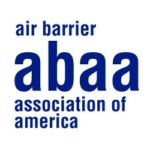ON-DEMAND WEBINAR
This presentation will cover a detailed explanation of the challenges and solutions facing through-wall flashings and transition membranes, provide a thorough description of the characteristics of several types of membranes, emphasize the importance of compatibility, and explain proper installation techniques.
It is important to understand the latest in test methods, current and projected code requirements, training and certification requirements and resources to allow you to specify this requirement.
Learning Objectives:
- Cover the performance criteria used to specify through-wall flashings and transition membranes.
- Cover how to design a resilient and durable flashing system that will minimize life cycle costs.
- Define the attributes of a variety of membrane materials.
- Recognize the compatibility between cavity wall components.
 Meagan Elfert, CDT, MBA, CBS, is the Vice President for York Flashings and has been part of the York team for nine years. She manages York’s sales team across all regions of the USA and oversees the strategic direction of the organization. Meagan provides educational sessions for contractors and performs jobsite visits to bring installers the latest technology and best flashing practices. She is currently active in the local Building Enclosure Council Research Triangle chapter of North Carolina and is the electronic communications chair. Meagan is also part of the IIBEC Carolinas Chapter, the Air Barrier Association of America, the North Carolina Masonry Contractors Association, and is on the board for Target Community and Educational Services, Inc.
Meagan Elfert, CDT, MBA, CBS, is the Vice President for York Flashings and has been part of the York team for nine years. She manages York’s sales team across all regions of the USA and oversees the strategic direction of the organization. Meagan provides educational sessions for contractors and performs jobsite visits to bring installers the latest technology and best flashing practices. She is currently active in the local Building Enclosure Council Research Triangle chapter of North Carolina and is the electronic communications chair. Meagan is also part of the IIBEC Carolinas Chapter, the Air Barrier Association of America, the North Carolina Masonry Contractors Association, and is on the board for Target Community and Educational Services, Inc.
There seems to be a lack of understanding of what quality assurance entails versus quality control, the fundamental differences between the two, and what each function brings to the table. This is not unique to the ABAA air barrier quality assurance program or the construction industry in general. These terms are used interchangeably and misunderstood in all industries.
In this presentation, a discussion of how to implement quality assurance and quality control will be explored specific to the building enclosure, and the steps you can take to ensure a high-performance building.
Learning Objectives:
- Explore how quality management systems can be applied to the construction process, and how quality assurance differentiates with quality control.
- Assess potential impacts to cost, scheduling, building performance, and durability by poor installation of air barriers.
- Describe language required in a specification that provides key criteria in regards to implementing an air barrier site quality assurance program.
- Define key components of an air barrier site quality assurance program, and assess the importance and relationship of each component.
 Laverne Dalgleish, CABS, Executive Director Air Barrier Association of America
Laverne Dalgleish, CABS, Executive Director Air Barrier Association of America
Mr. Laverne Dalgleish was requested in 2000 to organize a trade association that would focus on the air barriers that were going to become a requirement in the Commonwealth of Massachusetts building code on July 1, 2001, specifically to deal with training the installers.
Laverne had managed trade associations and had developed a Site Quality Assurance Program based on his work in developing standards at the International Organization for Standardization (ISO).
Over the years, Laverne has spearheaded the development of material specifications, test methods, training courses, installer certification and research projects, all to bring organization and technical documents that were used to grow the air barrier industry.
Over the years, Laverne has become a frequent presenter across North America and Internationally on a variety of topics as they relate to building envelopes, energy efficiency, green building practices, and standards and quality of construction.
Can you see air leaks and see water leaks in your new building right away? Do you want your project finished only to then find out that you have installation deficiencies? Do you want project delays for rework due to faulty installation? We didn’t think so either and we’re here to help! When you specify the ABAA QAP program, you receive a risk management program that address the potential issues during the installation process. The installation is performed by individuals and companies that are educated and have the experience to properly install air barriers. But it does not stop there! The Site Quality Assurance Program addresses a wide range of items which can impact the installation. Find out more about the program, the costs, benefits and how to successfully execute your air barrier installation.
Learning Objectives:
- Determine the impacts of air leakage that can be quantified.
- Assess potential impacts to cost, scheduling, building performance and durability by poor installation of air barriers.
-
Define key components of an air barrier site quality assurance program and assess the importance of each component and how they interrelate.
- Describe language required in a specification that provides key criteria in regards to implementing an air barrier site quality assurance program to reduce liability and risk.
 Ryan Dalgleish has been involved in the building enclosure and building performance areas of construction in both the commercial and residential sectors for over 20 years. He acts in the position of Chief Operating Officer for the Air Barrier Association of America. Ryan is a certified Net Zero building instructor, teaches master builder courses to builders across the country and is a frequent speaker at various technical presentations dealing with the building enclosure to various building official associations, city departments, building enclosure councils and chapters of the American Institute of Architects, Construction Specifications Institute and a number of local home builder associations.
Ryan Dalgleish has been involved in the building enclosure and building performance areas of construction in both the commercial and residential sectors for over 20 years. He acts in the position of Chief Operating Officer for the Air Barrier Association of America. Ryan is a certified Net Zero building instructor, teaches master builder courses to builders across the country and is a frequent speaker at various technical presentations dealing with the building enclosure to various building official associations, city departments, building enclosure councils and chapters of the American Institute of Architects, Construction Specifications Institute and a number of local home builder associations.
While commissioning of MEP building systems has been around for many years, Building Enclosure Commissioning (BECx) is relatively new to the construction industry. This presentation will provide an outline on the practice of BECx and its benefits with real world case studies. It will begin by walking through the fundamental building science principles pertaining to heat and moisture movement through building enclosure assemblies, as well as describe the function and order of importance of the primary environmental control layers (water, air, vapor and thermal).
The building science principles will serve as foundation for understanding anticipated building performance and what is expected for high performance buildings today while comparing to what was required historically. The presentation will then dive further into the various approaches in the industry today like LEED v4.1 and ASTM E2813, focusing on the key activities performed during each construction phase. Each stage of the BECx process will be thoroughly described including the typical deliverables (e.g., BECx Plan/Record, BECx specifications examples, design peer reviews, construction observation, item tracking log, functional performance testing, etc.).
Learning Objectives:
- Explore building enclosure history and design principles.
- Explain BECx requirements.
- Summarize BECx deliverables.
- Describe BECx functional performance testing.
 Adam Ugliuzza brings 17 years of engineering experience focusing on building science and the building enclosure construction industry. Discipline expertise includes building enclosure consulting and commissioning services for new and existing construction, in addition to forensic investigations to determine root cause of building performance issues. He also brings industry leading expertise in large building whole building airtightness testing. Adam continues to work on projects across the United States and abroad providing professional building enclosure consultation in both the residential and commercial space for all types of construction. Through this experience, Adam brings a unique approach to building enclosure consulting and testing, concentrating on enclosure interface coordination in design and construction phases of the project that overlays a holistic approach, critical to achieving high performance building construction; the goal to help ensure all the materials, systems, and assemblies are properly connected to provide continuous environmental control.
Adam Ugliuzza brings 17 years of engineering experience focusing on building science and the building enclosure construction industry. Discipline expertise includes building enclosure consulting and commissioning services for new and existing construction, in addition to forensic investigations to determine root cause of building performance issues. He also brings industry leading expertise in large building whole building airtightness testing. Adam continues to work on projects across the United States and abroad providing professional building enclosure consultation in both the residential and commercial space for all types of construction. Through this experience, Adam brings a unique approach to building enclosure consulting and testing, concentrating on enclosure interface coordination in design and construction phases of the project that overlays a holistic approach, critical to achieving high performance building construction; the goal to help ensure all the materials, systems, and assemblies are properly connected to provide continuous environmental control.
This course equips owners, architects, engineers, and construction professionals with the knowledge to navigate the evolving landscape of commercial energy efficiency codes and their critical role in sustainable and energy-efficient building design. We will delve into the most recent and upcoming energy codes and standards, with a focus on ASHRAE 90.1 and IECC, and explore their implications for building enclosure design and performance.
Energy codes are instrumental in achieving energy-efficient buildings within our built environment. We will examine key requirements of these codes and their impact on building enclosure design, materials, and systems. Additionally, the course will highlight the importance of Building Enclosure Commissioning (BECx) – a quality-assurance process that ensures the building enclosure meets design intent and performance requirements. The BECx process, including design review, eld testing, and functional testing, helps identify and address issues related to air and water leakage, thermal performance, and moisture management.
Through engaging case studies and real-world examples, participants will gain valuable insights into the challenges and opportunities of implementing energy codes and BECx in their projects. Furthermore, the course will explore emerging trends and innovations in building enclosure design and commissioning, offering a glimpse into new materials, technologies, and performance metrics shaping the future of the industry.
Learning Objectives:
- Discuss and analyze key energy code requirements and their market impacts.
- Describe and detail the Building Enclosure Commissioning (BECx) process.
- Identify and explain essential construction and functional testing procedures and required qualifications.
- Examine and learn valuable insights from case studies and lessons learned, demonstrating real-world applications
 Keith A. Simon is an expert in building enclosure technology, Keith Simon addresses the critical and often unmet need for ensuring and improving building performance, resilience, and durability by guiding design teams, educating future architects, and facilitating interdisciplinary exchange. With more than 20 years of experience in the industry, Keith is chair and founder of the Austin Building Enclosure Council, Vice Chair of the NIBS Building Enclosure Technology and Environment Council (BETEC), and Scholarships Chair for the Society of Building Science Educators (SBSE).
Keith A. Simon is an expert in building enclosure technology, Keith Simon addresses the critical and often unmet need for ensuring and improving building performance, resilience, and durability by guiding design teams, educating future architects, and facilitating interdisciplinary exchange. With more than 20 years of experience in the industry, Keith is chair and founder of the Austin Building Enclosure Council, Vice Chair of the NIBS Building Enclosure Technology and Environment Council (BETEC), and Scholarships Chair for the Society of Building Science Educators (SBSE).
 Stephen Shanks, CxA, CxA+BE, BECxP, NDT Level III, is a building scientist and commissioning provider with over 40 years of experience. As Vice President for Building Enclosure Commissioning at Salas O’Brien Company, he possesses a unique blend of expertise in physics and building construction. His knowledge and experience allow him to electively bridge theory and practice. Stephen is a Subject Matter Expert (SME) for Building Enclosure Commissioning (BECx), Air Barriers, Whole Building Airtightness Testing (WBAT), and Thermal-Infrared (IR) Examinations. He is actively engaged in industry standard and code development committees, including ASHRAE Technical Committees 4.4 Building Envelope Performance, 7.9 Building Commissioning, and 1.12 Moisture Management in Buildings; ASTM Committee E06 Performance of Buildings for BECx & WBAT; and BCxA BECx Best Practices Committee.
Stephen Shanks, CxA, CxA+BE, BECxP, NDT Level III, is a building scientist and commissioning provider with over 40 years of experience. As Vice President for Building Enclosure Commissioning at Salas O’Brien Company, he possesses a unique blend of expertise in physics and building construction. His knowledge and experience allow him to electively bridge theory and practice. Stephen is a Subject Matter Expert (SME) for Building Enclosure Commissioning (BECx), Air Barriers, Whole Building Airtightness Testing (WBAT), and Thermal-Infrared (IR) Examinations. He is actively engaged in industry standard and code development committees, including ASHRAE Technical Committees 4.4 Building Envelope Performance, 7.9 Building Commissioning, and 1.12 Moisture Management in Buildings; ASTM Committee E06 Performance of Buildings for BECx & WBAT; and BCxA BECx Best Practices Committee.
Engineering Analysis is a necessary tool to provide the fire protection and safety of our buildings. The exponential number of wall assembly combinations and detailing of enclosure assemblies in the built environment prevents the opportunity to confirm fire performance through direct testing. This is especially true with the required investment of time, effort, and cost of larger scale tests such as NFPA 285. Qualified Fire Engineering teams in partnership with third-party labs and product manufacturers offers the opportunity to extend successful test results beyond the tested specimen through a Letter of Engineering Analysis.
This presentation will discuss the opportunity, challenges and limitation present when considering acceptance of test data extended to support substitution or modification to an assembly.
Learning Objectives:
- Identify appropriate content within engineering analysis reports on exterior walls.
- Review the different types of engineering analysis reports.
- Cover the engineering analysis process and considerations when reviewing fire test data for extension.
- Identify the relevant code path that allows for engineering analyses.

Keith Nelson
Commercial Application Leader & Fire Performance SME
Dupont
 Daniel Martin
Daniel Martin
Lead Fire Protection Engineer
Jensen Hughes
